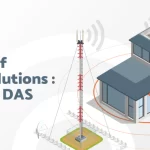ERRCS and Carrier DAS for Healthcare Organizations
With the rapid progression of technology, hospitals are struggling to keep up with today’s fast-paced wireless networking. As a result healthcare organizations, now more than ever, largely depend on connectivity to communicate and operate with high efficiency. This is mainly due to how these devices and sensors are meant to enhance the medical resource efficiency along with the patient’s experience. Being able to contact doctors, nurses, and other healthcare staff at any moment in the event of an emergency is vital, regardless of the location of the individual. Parking garages and other hard-to-reach areas must have strong wireless connections as it’s crucial for the patients’ wellbeing.
The Right Solution:
The recurring signal issues found in hospitals as a result of the overload of medical devices can impact connectivity. Networks that are compatible with both traditional systems and new wireless technologies are required for consistent operations. Peer Communications enables organizations to have a reliable wireless connection regardless of the facility’s location or the dimensions of its infrastructure. This happens by implementing the optimal solution to boost the indoor cellular signal and reach flawless voice and 5G or LTE coverage. Additionally, our distributed antenna system (DAS) expands coverage on both large buildings and uniquely shaped areas, all while maintaining safety compliances for hospital building codes, and fire safety ordinances for emergency responders. As a result, organizations can function while knowing that they have reliable connectivity for all users, in any structure or situation.
Requirements:
So, what are the requirements for these comprehensive solutions? Primarily, DAS infrastructures rely on RF cable (coaxial cable) to sync antenna remotes and preferably fiber-optic cable to connect floors and other discrete areas. However, advanced DAS solutions operate on IT structured cabling instead of coaxial. This offers a number of benefits, from the ease of use for installers and reduced overhead costs to supporting supplementary networks and functions such as Wi-Fi and security systems.
In a nutshell, DAS can help healthcare organizations implement an efficient and cost-effective solution, thanks to reliable facilities and amplified network signals that optimize communication speeds, reduce costs, and sustain healthcare efficiency.
Get in touch with us to learn more about our industry-leading solutions.





